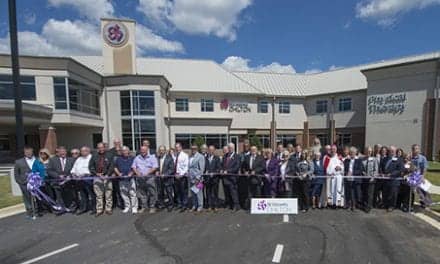 |
Low back pain (LBP) is the second most common presenting complaint to a primary care physician’s office after upper respiratory infection. It is also one of the most common reasons for work absenteeism and is the most common reason for work disability.
The etiology of LBP can be elusive, with estimates as high as 85% with no obvious etiology. The majority of patients with acute LBP improve within 4 to 6 weeks with conservative treatment. In fact, over 3 months, 90% or more of moderate intensity LBP in the adult population resolves with conservative measures. From 5% to 10% of patients with LBP develop persistent symptoms, lasting 3 or more months. The resulting resource use and disability are a major personal and public health problem. In the United States, 1% of the adult population is permanently disabled by back pain, while an additional 1% are temporarily disabled. The annual estimates for the treatment of low back pain and related disability exceed $50 billion.
The impact on a patient’s life when dealing with persistent LBP is immense. It can interfere with work, activities of daily living, and interpersonal relationships. Treatment is thus imperative in order to minimize disability and pain, restore function, and decrease health care use. However, prior to embarking on a treatment protocol for persistent LBP, expectations of treatment must be discussed and fully understood by the patients, as complete pain relief in these patients is rarely achieved. The various treatments available for persistent LBP can be broadly categorized as pharmacologic and nonpharmacologic. Patients typically require both types of treatment.
Pharmacologic treatments must address the somatic and neuropathic aspects of pain depending on the patient’s specific pain generator. This can include oral treatments such as acetaminophen, nonsteroidal anti-inflammatory drugs, opioids, antiepileptics, and/or topical analgesics, among others. Injectable pharmacologic agents, such as steroids via spinal intervention, can be beneficial in a properly selected population.
Nonpharmacologic treatment options include intervention by allied health personnel such as physical and occupational therapists. They can also include surgical intervention or implantable nerve stimulation devices, depending on a patient’s particular pathology. More uncommonly used techniques include cognitive therapy, behavioral therapy, and complementary/alternative medicine.
LBP is the most common reason for patients to seek outpatient physical therapy. The 1970s were the birth decade for so-called “back schools,” where chronic LBP patients were offered education regarding their condition and postural exercises and training, and where patients focused on, for instance, body mechanics while lifting.
 |
| Psychosocial and psychophysiologic factors frequently contribute to persistent nonmalignant pain. |
In the 1980s functional restoration programs were introduced in physical therapy for LBP. These programs were designed in response to the concept of deconditioning, a physiologic and psychologic state resulting from immobility. The premise was that LBP led to inactivity and a subsequent loss in spinal mobility, muscle strength, and cardiopulmonary fitness. Furthermore, there were psychosocial sequelae, including absence from work, depression, anxiety, and social isolation.
In the 1990s, perhaps as a response to the increased societal costs of persistent LBP, rehabilitation was geared toward restoring function and reducing pain in an effort to allow the patient to pursue gainful employment. There is clearly a benefit from rehabilitative therapy when compared to nonintervention, with the outcome measured being the reduction in number of sick days secondary to LBP. Studies have also demonstrated the benefit of intensive rehabilitation programs and similar programs designed for implementation in the ambulatory setting. Again, when measuring the number of sick days secondary to LBP, it was shown that, generally speaking, the more intensive (and, thus, more expensive) the therapy program, the better the outcome.
Unfortunately, these numerous studies have failed to provide a consensus on the optimal composition (particulars of specific physical conditioning and psychologic intervention) of a rehabilitation program for a patient with persistent LBP. Furthermore, as treatment needs to be individualized, there is limited data on which therapeutic interventions should be implemented for which patient. However, one study looked at the outcomes of patients with chronic LBP who were enrolled in two different rehabilitation protocols with varying degrees of exercise and psychologic intervention as a preliminary step in establishing such consensus. Patients were assigned to either a functional restoration program (FRG) or active individual therapy (AIT). The FRG was 5 weeks in duration and consisted of group therapy 5 days a week and 6 hours per day. The AIT program was also 5 weeks in duration, but consisted of individual therapy 3 days a week and 1 hour per session. It also included a home exercise component of 50 minutes twice a week. Both treatment groups reported decreased pain intensity, although that was not the main objective of the study. Both groups also showed an improvement in spine flexibility and trunk muscle endurance, with the FRG demonstrating a significant improvement in endurance. Furthermore, both groups demonstrated improvement in quality of life indicators as measured by the Dallas Pain Questionnaire.
Studies have shown the efficacy of physical therapy in the treatment of acute, subacute, and chronic LBP. One study showed functional improvement, as measured by the CareConnections Outcomes tool, was observed in a retrospective study of patients referred to outpatient physical therapy with acute, subacute, and chronic low back disorders. Treatment primarily included flexibility and strengthening exercises, but did incorporate endurance exercises, mobilization techniques, and modalities in select patients. This same study documented perceived improvement and a significant decrease in pain as measured by the visual analog scale in patients with acute, subacute, and chronic pain. Although outcome measures were greatest with patients with acute symptoms, benefit was documented in all outcome measures across all treatment groups. The most important determinants in functional outcome were age, symptom duration, and inclusion of flexibility and strengthening exercises and mobilization techniques.
Psychosocial and psychophysiologic factors frequently contribute to persistent nonmalignant pain. Careful assessment for depression, anxiety, and other psychological comorbidities must be undertaken during the initial evaluation of persistent LBP. If appropriate, cognitive and behavioral therapy may be useful in the multidisciplinary treatment of persistent LBP. Negative thinking patterns, including overgeneralization, catastrophizing, selective attention, jumping to conclusions, and negative predictions can profoundly affect a patient’s function, perception of pain, and sense of well-being. Behavioral therapy broadly attempts to lessen distress and help patients enjoy more satisfying and productive lives. This is done via identification and alteration of dysfunctional beliefs and attitudes that interfere with the patient’s ability to cope with pain. Further behavioral therapies include biofeedback, relaxation techniques, imagery training, and hypnotherapy.
Complementary and alternative therapies are not considered conventional therapies in the treatment of persistent LBP, and well-designed studies establishing clear efficacy are lacking. Nevertheless, many patients seek such treatments and they could be considered if the potential benefits outweigh any risks. Treatments could include manipulative methods, acupuncture, and/or the use of herbal or nutritional supplements.
Education is also a vital component of a patient’s treatment of LBP. Patients in my clinic frequently will have seen multiple practitioners in various specialties who many times have differing viewpoints on the particular pain generator(s) that are causing the hardship. This is likely a manifestation of the sheer complexity of the spine and the fact that our usual diagnostic tools lack great specificity and sensitivity. Furthermore, the biomechanics of motion are immensely complex and usually result in multiple pain generators in a patient with persistent LBP. My patients frequently feel frustration regarding the lack of consensus on the etiology of their particular pain symptoms. A couple of minutes of your time explaining the complexity and frequent inability to pinpoint pain generators can be very enlightening and reassuring to a patient with persistent LBP.
In summary, the cost and clinical effectiveness of the multidisciplinary treatment of persistent LBP are well documented, as measured by the successful return of patients to employment, reduced medication (opioid) usage, decreased health care utilization, and reduced disability expenses.
Chirag Kalola, MD, is medical director of the Good Shepherd Spine and Joint Center at Good Shepherd Rehabilitation Network in Allentown, Pa. Kalola is a physiatrist who specializes in pain management. He earned his medical degree from Tulane University School of Medicine in New Orleans and completed a residency in physical medicine and rehabilitation at Loyola University Medical Center. For more information, contact .




